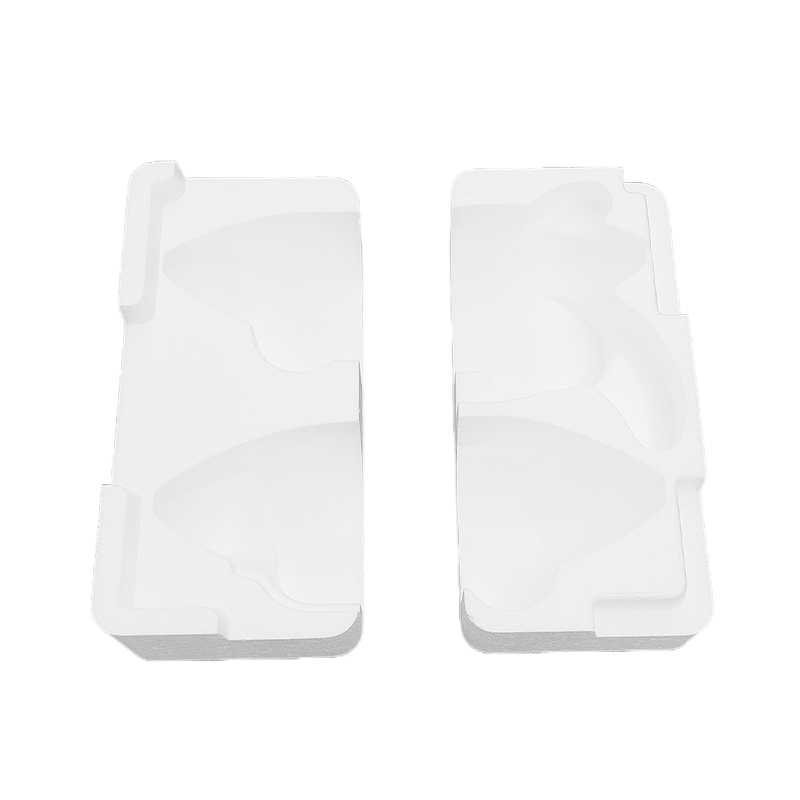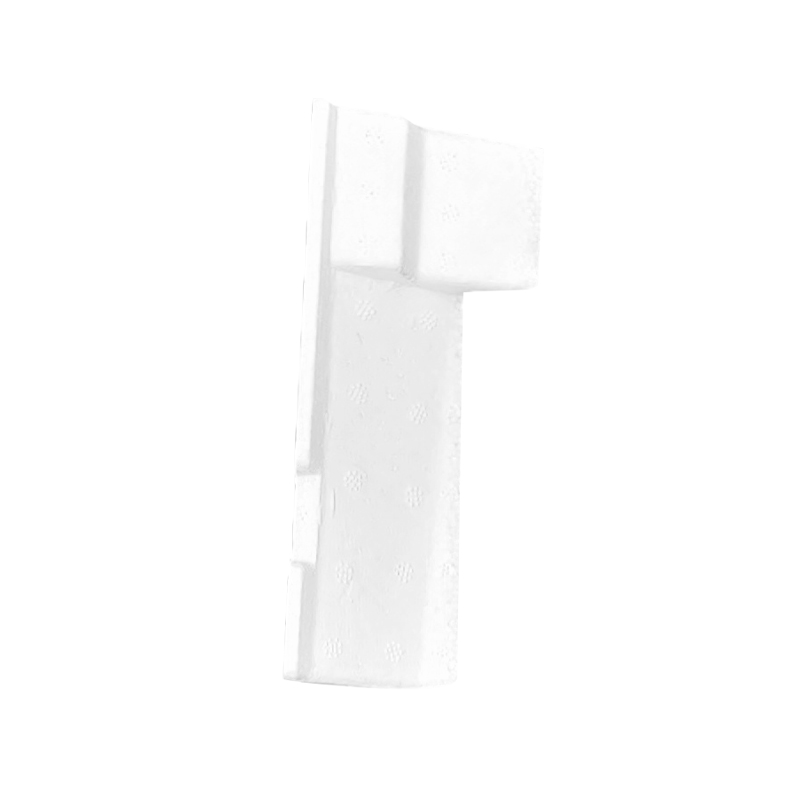How does batteries EPS packaging protect high-energy battery cells with intelligent cushioning and customized structures?
Release Time : 2025-11-20
In the era of rapid development in new energy vehicles, energy storage systems, power tools, and consumer electronics, lithium batteries, as core components with high energy density, have become a crucial link in the industry chain for transportation and storage safety. If the battery casing cracks due to external force, it can lead to short circuits and thermal runaway within the battery cells, and even pose a fire risk. EPS (expanded polystyrene) packaging, specifically designed for batteries, is becoming an "invisible armor" ensuring the physical safety of the entire battery chain, silently protecting the integrity and stability of energy cells during every handling and long-distance journey, thanks to its superior cushioning performance, highly customizable internal cavity structure, and lightweight characteristics.
The core advantage of batteries EPS packaging stems first from its unique energy absorption mechanism. EPS material is composed of countless closed micropores. When subjected to drops, collisions, or stacking, the foam converts the impact kinetic energy into internal energy through controllable elastic deformation, effectively attenuating the peak stress transferred to the battery body. This "softness overcomes rigidity" cushioning logic avoids stress concentration that can occur with rigid packaging, making it particularly suitable for lithium-ion cells that are extremely sensitive to structural integrity. Even under extreme transportation conditions, such as forklift collisions, container swaying, or falls from heights, the EPS liner maintains the integrity of the battery casing and prevents terminal misalignment, thus eliminating safety hazards at the source.
The structural design demonstrates a deep adaptation to battery form factors. Whether it's cylindrical 18650 cells, square aluminum-cased modules, or irregularly shaped pouch battery packs, customized inner trays can be precisely developed through digital modeling. Each battery compartment has an independent recess with a perfectly fitted contour, preventing rolling, friction, or collisions during transportation; the separators and reinforcing ribs are rationally distributed, both separating units and enhancing overall rigidity; for multi-cell arrangements, electrostatic discharge channels or ventilation gaps can be integrated, balancing safety and heat dissipation requirements. This "one-item-one-model" customization concept upgrades packaging from a general-purpose container to a functional protective system.
Lightweighting and space efficiency further enhance logistics value. EPS itself has extremely low density, adding almost no extra load, helping to control overall vehicle transportation costs; the inner cavity tightly fits the battery shape, minimizing gaps and making the packaging compact, facilitating standardized stacking and warehouse management. In large-scale battery shipments, this efficient space utilization significantly improves container loading rates, reducing carbon emissions and unit logistics costs. Simultaneously, brand logos, warning icons, or QR codes can be molded onto the surface, enabling information visualization and traceability management.
Environmental protection and sustainability are also incorporated into modern design considerations. Some manufacturers have launched recyclable EPS or bio-based alternatives, reducing environmental footprint while maintaining performance; waste packaging can be compressed and recycled back to the factory, forming a closed-loop cycle. Furthermore, EPS is non-toxic, odorless, and free of halogenated flame retardants, complying with RoHS and other environmental directives, ensuring friendliness to humans and the environment at every stage of production, use, and disposal.
Applications cover the entire supply chain from factory to end-user. In the battery module manufacturing process, it protects precision solder joints from vibration damage; in cross-border shipping, it resists salt spray, temperature and humidity changes, and long-term pressure; in after-sales replacement scenarios, it provides a safe return channel for repaired batteries. Its existence is not only a physical barrier but also a solemn commitment by enterprises to product responsibility and user safety.
Ultimately, the value of battery EPS packaging lies not only in "encasing batteries," but also in its molecular-level foam structure, which constructs a gentle yet sturdy defense in the macroscopic world. When a battery cell safely arrives after traversing thousands of miles, and when an electric vehicle runs stably thanks to its intact battery, it is this layer of white foam that silently bears the pressure. In today's era of energy revolution and green logistics, high-performance battery EPS packaging, with its triple intelligence of cushioning, customization, and lightweight design, continues to define new standards for the safe transport of high-risk goods—ensuring that every kilowatt-hour of electricity arrives safely.
The core advantage of batteries EPS packaging stems first from its unique energy absorption mechanism. EPS material is composed of countless closed micropores. When subjected to drops, collisions, or stacking, the foam converts the impact kinetic energy into internal energy through controllable elastic deformation, effectively attenuating the peak stress transferred to the battery body. This "softness overcomes rigidity" cushioning logic avoids stress concentration that can occur with rigid packaging, making it particularly suitable for lithium-ion cells that are extremely sensitive to structural integrity. Even under extreme transportation conditions, such as forklift collisions, container swaying, or falls from heights, the EPS liner maintains the integrity of the battery casing and prevents terminal misalignment, thus eliminating safety hazards at the source.
The structural design demonstrates a deep adaptation to battery form factors. Whether it's cylindrical 18650 cells, square aluminum-cased modules, or irregularly shaped pouch battery packs, customized inner trays can be precisely developed through digital modeling. Each battery compartment has an independent recess with a perfectly fitted contour, preventing rolling, friction, or collisions during transportation; the separators and reinforcing ribs are rationally distributed, both separating units and enhancing overall rigidity; for multi-cell arrangements, electrostatic discharge channels or ventilation gaps can be integrated, balancing safety and heat dissipation requirements. This "one-item-one-model" customization concept upgrades packaging from a general-purpose container to a functional protective system.
Lightweighting and space efficiency further enhance logistics value. EPS itself has extremely low density, adding almost no extra load, helping to control overall vehicle transportation costs; the inner cavity tightly fits the battery shape, minimizing gaps and making the packaging compact, facilitating standardized stacking and warehouse management. In large-scale battery shipments, this efficient space utilization significantly improves container loading rates, reducing carbon emissions and unit logistics costs. Simultaneously, brand logos, warning icons, or QR codes can be molded onto the surface, enabling information visualization and traceability management.
Environmental protection and sustainability are also incorporated into modern design considerations. Some manufacturers have launched recyclable EPS or bio-based alternatives, reducing environmental footprint while maintaining performance; waste packaging can be compressed and recycled back to the factory, forming a closed-loop cycle. Furthermore, EPS is non-toxic, odorless, and free of halogenated flame retardants, complying with RoHS and other environmental directives, ensuring friendliness to humans and the environment at every stage of production, use, and disposal.
Applications cover the entire supply chain from factory to end-user. In the battery module manufacturing process, it protects precision solder joints from vibration damage; in cross-border shipping, it resists salt spray, temperature and humidity changes, and long-term pressure; in after-sales replacement scenarios, it provides a safe return channel for repaired batteries. Its existence is not only a physical barrier but also a solemn commitment by enterprises to product responsibility and user safety.
Ultimately, the value of battery EPS packaging lies not only in "encasing batteries," but also in its molecular-level foam structure, which constructs a gentle yet sturdy defense in the macroscopic world. When a battery cell safely arrives after traversing thousands of miles, and when an electric vehicle runs stably thanks to its intact battery, it is this layer of white foam that silently bears the pressure. In today's era of energy revolution and green logistics, high-performance battery EPS packaging, with its triple intelligence of cushioning, customization, and lightweight design, continues to define new standards for the safe transport of high-risk goods—ensuring that every kilowatt-hour of electricity arrives safely.







